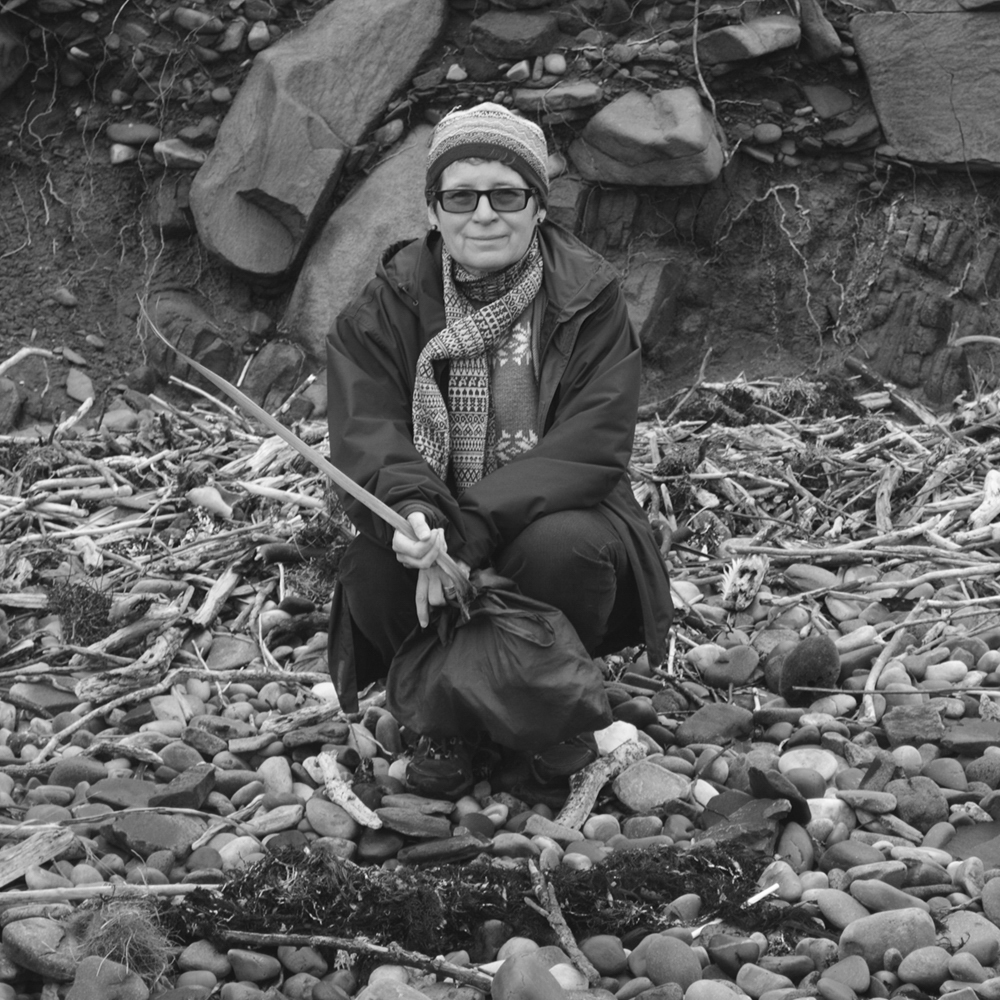Julie Gough
Hobart
2017
Displayed 2017 at Museum of Contemporary Art Australia

Julie Gough
Born 1965, Melbourne. Lives and works Hobart
Trawlwoolway, Tasmania region
Julie Gough is an artist, curator and writer whose art and research practice often involves uncovering and re-presenting conflicting and subsumed histories, many referring to her family’s experiences as Tasmanian Aboriginal people. Questioning and re-evaluating the impact of the past on our present lives, a key intention of Gough’s work is to invite a viewer to a closer understanding of our continuing roles in and proximity to unresolved national stories – narratives of memory, time, location and representation. Current work in installation, sound and video provides the means to explore ephemerality, absence and recurrence, finding connections between objects, places and people through time.
Artist text
by Emily McDaniel
Julie Gough draws her influence and inspiration from the people, stories and places that connect to her maternal Tasmanian Aboriginal heritage. Her 2015 work The Gathering centres on an assemblage of crosses displayed on an antique table, each inscribed with the names of Tasmanian colonial estates and weighted by a stone collected from the gateway entrances of these properties. The installation is accompanied by a video, projected as a virtual window from the pseudo-historic, gentrified interior of a dining room, providing glimpses of a darkly picturesque Tasmania. The video, reminiscent of investigative footage, pauses on the names of the colonial estates, including those that were witness to the marginalisation and attempted eradication of Tasmania’s first people; today, many operate as lucrative accommodation venues offering wedding, golfing and heritage experiences.
Gough often incorporates a sense of both movement and stasis in her video work. There is the suggestion of waiting and contemplating, with the intention to ‘summon an onlooker to enter into the work as a timekeeper’. (1) As the onlooker begins to travel with the imagery, the mountainous and vast landscapes remain still and poised in the distance. Fences and gates occupy the foreground, indicative of the frustration experienced by Tasmanian Aboriginal people who seek, often unsuccessfully, to gain access to their cultural lands.
The Gathering is interspersed with stills and footage of piled and enflamed trees. In the video Gough references a Colonial Times article from 13 November 1829 that urged landowners to clear trees and underwood, eliminating material for the shelter or gathering of Aboriginal people. The tree pyre is also in reference to a large fire that was lit to mark a central point of the Black Line. Gough layers the moving imagery with historical quotes and accounts uncovered in her research, such as the journal of George Augustus Robinson, government-sanctioned orders, and newspaper articles and letters of the time.
On 7 October 1830, under the direction of Lieutenant Governor George Arthur, 2,200 colonists, pastoralists and convicts formed the Black Line, a colonial military operation that swept from north to south across Tasmania with the intention to corral the ‘hostile tribes of the Natives’. This campaign was considered unsuccessful with a count of two Indigenous people dead and two captured. Following this, colonists issued letters of support from their respective districts, offering obedience and admiration to Arthur for his ‘exertion on every occasion for the protection of our Persons and Property, and the advancement of our property’. The listed signatories of these letters were ‘The Land and Stock Holders, and free inhabitants’ from the Van Diemen’s Land counties of Cornwall, Campbell Town, Richmond, New Norfolk and Great Swanport, (2) and many of these names represent the landholders of the colonial properties we gaze at in Gough’s work.
Gough’s overall intention is to locate the point of unease, where familiarity engenders discomfort, situating her work within a place of uncertainty. (3) This methodology has seen her reference the dark history of the Black Line on multiple occasions throughout her practice. As a researcher, she accesses collections held in libraries, museums, communities and landscapes to cross-examine our various identities and challenge our cultural amnesia. The Gathering uncovers the complex histories of private property ownership in Tasmania, and, by doing so, Gough enables us to reassess our understanding of history.
Notes
(1) Julie Gough, ‘Artist statement’, accessed 28 November 2016, https://juliegough.net/artist-statement/.
(2) These three quotes from historical sources are cited by Julie Gough in The Gathering video.
(3) Julie Gough, Rivers run, Cairns Regional Gallery, Cairns, 2010, p.17.








